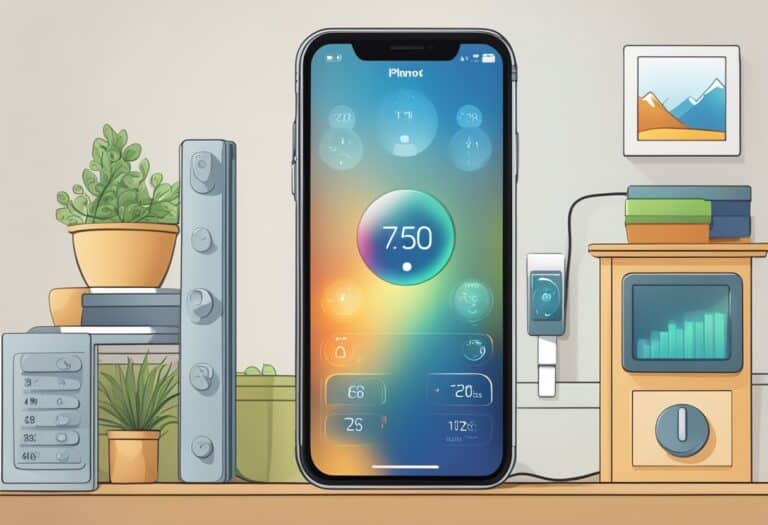Driving on a sunny day can be both a pleasure and a challenge.
The clear skies and bright light improve visibility, allowing you to take in the surroundings and making road signs and other vehicles easier to see. However, the same sunlight can create hazards such as glare, which can momentarily blind drivers and make it difficult to gauge the distance to other objects on the road.
Taking measures to mitigate sun glare is essential for safe driving in sunny conditions. Utilizing sunglasses with UV protection, employing sun visors effectively, and keeping the windshield clean are simple yet effective strategies to enhance your safety and comfort behind the wheel.
Additionally, being aware of how sun position varies with the seasons and how it affects driving can help you anticipate and prepare for these challenges, ensuring a more secure driving experience on sunny days.
To ensure safety while driving in sunny conditions, use UV-protected sunglasses, maintain a clean windshield, and utilize sun visors to mitigate glare. Adjust your driving to the sun’s position and maintain safe distances to enhance visibility and reaction time.
The Importance of Eye Protection
Protecting your eyes from harsh sunlight ensures you maintain clear vision while driving, which is vital for your safety and the safety of others. Appropriate eyewear can significantly reduce the risk of UV damage and improve visibility.
Choosing the Right Sunglasses
When selecting sunglasses for driving on a sunny day, it’s essential to pick a pair that offers 100% UV protection to shield your eyes from UVA and UVB rays. Look for sunglasses labeled with ‘UV400’, which blocks wavelengths up to 400 nanometers – covering both UVA and UVB protection. Consider frames with a wraparound design to prevent sunlight from entering through the sides. Additionally, choosing lenses with anti-reflective coating can reduce glare, allowing for better visibility and comfort.
Understanding UV Rays and Polarization
Polarized sunglasses utilize a special filter that block horizontally oriented light, effectively reducing glare from horizontal surfaces like roads and water. This feature can improve your visibility, contrast, and comfort while driving. However, it’s important to note that not all polarized lenses offer UV protection. Make sure that the sunglasses you choose have a label confirming they provide UV protection. Moreover, understanding that UV rays – both UVA and UVB – can cause long-term eye damage reiterates the importance of wearing sunglasses that offer comprehensive coverage, even when it doesn’t feel particularly bright outside.
Mitigating Sun Glare While Driving
Sun glare can significantly reduce visibility and reaction time while driving. Implementing strategies to manage this glare will enhance your safety. Here’s how you can effectively combat glare from bright sunlight during your drives.
Using Sun Visors Effectively
Your sun visor is a primary tool to block out the sun and reduce glare. Orient the visor to shield your eyes without obstructing your view of the road. If the sun is to the side, swing the visor to the side window to continue to block the bright light.
Windshield Maintenance and Accessories
Maintaining a clean windshield is crucial. Wiper blades should be in good condition to prevent streaks that can exacerbate sun glare. Accessories like polarized windshield films can assist in diminishing glare. Regularly check your windshield for pitting or cracks, as these imperfections can scatter light and intensify glare.
Adjusting Your Driving to the Sun’s Position
- Drive with your headlights on: Even during daylight, turning on your headlights or high beams can improve your visibility to others when the sun glare is strong.
- Change your route or timing: If possible, adjust when or where you drive to avoid times when the sun is directly in your pathway.
- Increase following distance: Bright sunlight can make it harder to see the dashboard and judge distances. Giving yourself more space allows for a better response time.
By following these specific techniques, you can mitigate the effects of sun glare and ensure a safer driving experience.
Driving Strategies for Sunny Conditions

When driving in bright sunlight, implementing effective strategies is essential to ensure your safety and the safety of others on the road. It is crucial to adjust your speed, maintain proper distances, and clearly interpret road signs and lane markings to navigate in sunny conditions successfully.
Maintaining Safe Speed and Distance
Adjust Speed Appropriately: In sunny conditions, the glare can be a significant risk factor. It can momentarily impair your vision, making it difficult to gauge the speed and distance of other vehicles. Slow down if the sunlight is intense, and allow yourself time to react to unexpected situations.
Increase Following Distance: To compensate for the decreased vision caused by glare, you should increase the following distance between your car and the one in front. Maintaining a safety buffer can help prevent collisions if you or another driver needs to stop suddenly.
Interpreting Road Signs and Lane Markings
Use Your Visor and Polarized Sunglasses: Reduce sunlight glare and enhance your vision by using your sun visor and wearing polarized sunglasses. These will help in clearly seeing the road ahead and effectively interpreting road signs and lane markings.
Study the Road Ahead: Keep your eyes moving, scoping the road for upcoming signs and markings. The bright sunlight may cause a washout effect, making it more challenging to read signs and determine the correct lanes. By staying alert, you can anticipate and prepare for lane changes and turns with confidence.
Driving in sunny situations requires a heightened awareness and some adjustments to your standard driving habits. By incorporating these strategies, you can contribute to a safer environment on the roads during bright, sunny days.
Understanding Seasonal Sun Challenges
When driving in sunny conditions throughout the year, you must be aware of how the sun’s position can affect your visibility. Seasonal variations pose unique challenges, particularly during winter when the sun stays low or near the horizon. Weather-related factors like ice and fog also contribute to hazardous driving conditions.
The Risks of Winter Sun
During winter, low sun angles result in deeper shadows and can create blinding glare, particularly in the morning and late afternoon. This glare can make it difficult to see pedestrians, road signs, and other vehicles, significantly increasing the risk of accidents. Additionally, the reflectiveness of ice or snow can compound the intensity of the sun’s glare, creating a potential danger zone for drivers.
- Morning Drive: The sunrise can produce harsh light directly in your line of sight, reducing reaction time to hazards.
- Evening Commute: As the sun sets, you might be driving directly into intense light, which can be both distracting and disorienting.
It’s essential to adjust your driving behavior and to use sun visors and sunglasses to mitigate some of these risks.
Driving Safely Around Sunrise and Sunset
During sunrise and sunset, the sun’s position can cause temporary blindness as well as backlighting obstacles and creating longer shadows. To enhance your safety:
- Adjust your speed according to the visibility conditions.
- Increase following distances to allow more reaction time.
- Use headlights to make yourself more visible to other drivers, even during sunny days.
Especially in winter, when storms can suddenly reduce visibility and make roads slick with ice or slush, it’s important to remain vigilant. Fog can also develop quickly around these times, further reducing visibility and complicating driving conditions.
Practical Tips for Sunny Weather Driving
Driving under the bright glare of the sun requires precautionary measures to ensure safety. Be mindful of sun-related distractions and maintain your vehicle to aid visibility and minimize risks associated with sunny conditions.
Preventing and Reacting to Sun-Related Distractions
Glare from the sun can significantly impair your vision, making it essential to prevent and react to these distractions effectively. To deal with glare:
- Use polarized sunglasses to reduce eye strain.
- Adjust your vehicle’s sun visors properly to block out the sun.
- Keep your windshield clean inside and out to avoid amplifying the glare.
- If glare leads to temporary vision changes or distractions, increase your following distance for added reaction time.
React swiftly if you’re caught in glare unexpectedly by slowing down, signaling your intentions to others explicitly, and, if necessary, safely changing your route or timing of your commute to avoid low sun at dusk or dawn.
Routine Checks and Vehicle Readiness
Before your journey on a sunny day, conduct routine checks to ensure your vehicle’s readiness. Here are key aspects to focus on:
- Inspect your windshield for any cracks or marks that could worsen the effects of glare.
- Use your vehicle’s dashboard settings to adjust the interior lighting, ensuring clear visibility of your mirrors and instruments.
- Confirm that all signals are functional. This will be crucial for communicating during times of high glare, such as rush hour.
Remember, whether it’s a short commute or a long drive, staying proactive about these checks and adjustments is a cornerstone of safe driving habits and can help prevent fatigue. Always adapt your driving habits accordingly and maintain extra vigilance during transitions into nighttime driving.
Legal and Safety Considerations
When driving under sunny conditions, it’s crucial that you understand the relevant laws regarding vehicle safety and visibility. Adhering to these can protect you and others on the road. Here are the best practices and legal aspects you need to consider.
Understanding the Laws on Vision and Vehicle Safety
To ensure your safety and compliance with the law, be aware that regulations often require that your vehicle is equipped to handle bright conditions. This includes aspects such as having sun visors and if necessary, using appropriate sunshields. These measures are in place to mitigate the risks posed by sun glare, which can significantly impair visibility and reaction time. Verify that your vehicle meets these safety standards and make use of these features whenever you’re confronted with intense sunlight.
Best Practices for Motorists in Bright Conditions
When you’re on the road and faced with a sunny day, there are several strategies you should employ for safe driving:
-
Enhance Visibility: Utilize sunglasses or prescription eyewear that can reduce sun glare. Ensure your windshield is clean and devoid of streaks or smudges which can worsen the glare.
-
Use Your Signals: Always use your turn signals timely to guide other motorists, as bright conditions can make it harder to spot unanticipated driving maneuvers.
-
Adjust Driving Habits: In particular, allow for a greater following distance between you and the car ahead when you’re driving on a sunny day. This adjustment compensates for potentially increased reaction times due to visibility issues.
-
Recognize the Hazard: Be extra vigilant in detecting and responding to signals and road signs. Sun glare can obscure these important guides, so it’s vital to anticipate and look out for them.
Conclusion
When you drive in sunny weather, your visibility is generally enhanced compared to adverse conditions. Nonetheless, glare from the sun can pose a significant hazard. To mitigate this, use sunglasses and sun visors while driving. Additionally, be aware of the false sense of security that clear skies can bring; maintain a safe distance from the vehicle in front of you, as stopping distances remain constant regardless of weather.
It’s also important to consider the effect of heat on your vehicle. High temperatures can cause overheating of engines and increase the likelihood of tire blowouts. Ensure your vehicle is serviced regularly, checking coolant and tire pressure.
Remember, even in clear weather, stay vigilant for pedestrians, cyclists, and others on the road who may be more prevalent on sunny days. Your attention to these details ensures not only your safety but also the well-being of everyone on the road.
Frequently Asked Questions
In this section, you’ll find practical advice to help you deal with sun glare while driving, ensuring a safer driving experience.
What are the best methods to prevent sun glare while driving?
To prevent sun glare, ensure your windshield is clean and free of streaks, as dirt can intensify the glare. Use polarized sunglasses, and lower the visor to block direct sunlight.
What times of day is sun glare most intense on the road?
Sun glare is typically most intense during the early morning and late afternoon when the sun is low on the horizon. Adjusting your driving schedule can help avoid these peak glare times.
Are there specific types of glasses that help reduce sun glare for drivers?
Polarized sunglasses are especially effective at reducing sun glare for drivers by filtering horizontal light waves that create glare.
How can you safely drive when the sun is directly in your line of vision?
When the sun is directly in your line of vision, slow down, increase your following distance, use your sun visor, and try to use the road’s lane markings as a guide.
What precautions should a driver take when driving during sunset to ensure visibility?
During sunset, reduce speed, turn on your headlights to become more visible to other drivers, and use the sun visor or sunglasses to shield your eyes from direct sunlight.
Can prolonged exposure to sun glare while driving cause eye damage, and how can it be prevented?
Prolonged exposure to sun glare can lead to eye strain and damage. Protect your eyes by wearing sunglasses with UV protection and taking breaks during long drives when necessary.







